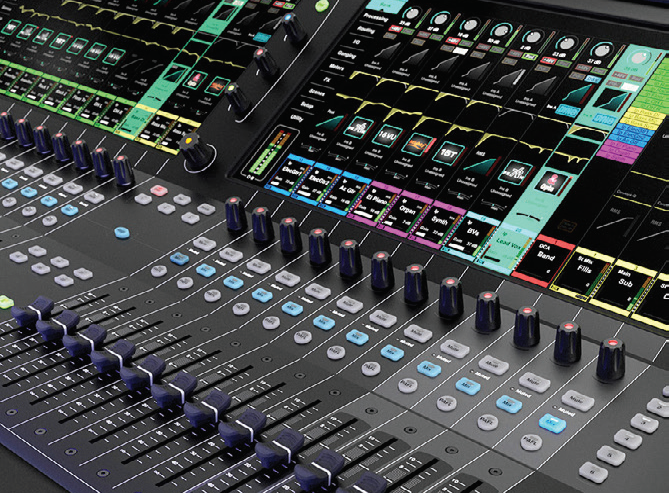For the novice sound engineer, it can be pretty intimidating to walk up to a large analog or digital console and try to figure out the routing of audio signals. It wouldn’t be so bad if the only place the sound had to go was to the main loudspeakers in the room.
Occasionally that’s the case, but most of the time, we’re also sending different mixes to monitors for musicians, to lobby and cry room speakers, and to various recordings. Moreover, we have several options for how we can group and control our signals. Let’s define what Auxes, Groups, VCAs, and Matrix mixes are and what they do..
Auxiliary Mixes
Often simply abbreviated as auxes, an auxiliary mix is pretty much what it sounds like; another, alternate mix using the same set of input signals that you are working within the house mix. Each channel will have an individual level control on each aux as well as a Master aux mix level. In this way, aux mixes are very much like the faders: turning up the channel level to Aux 1 adds more of whatever is in Channel 1 to that Aux mix.
As an example, let’s say you’re using Aux 1 for the worship leader’s monitor, and that her vocal mic is in Channel 1. If she wants more of her voice in her monitor, you turn up Channel 1 in Aux 1, thus raising the level of her voice in her monitor.
What makes aux mixes so cool is that they don’t impact the house mix at all, and you can just as easily lower or eliminate that signal from Aux 2. Thus, each aux mix is another complete mixing layer for your input signals, albeit without individual EQ adjustments for each of those sends. Most consoles/mixers that we use for live sound will have at least four. Of course, larger consoles gain more auxes, and it’s not uncommon to see digital consoles with 16, 24, or more aux mixes (many times, in stereo).
Aux sends (the points you send from each channel) can either be pre-fader or post-fader. That simply means that the fader (which controls your house mix) will either have no effect on the aux send (pre-fader) or it will have an effect (post-fader).
In other words, if Aux 1 is pre-fader, you can turn the Channel 1 fader down all the way to off, and still have signal going to the monitor connected to Aux 1. If it’s post-fader, turning down the fader on Channel 1 will also turn down the signal to Aux 1.
Some consoles allow you to switch each aux to be either pre- or post-fader (and some provide additional options), while other consoles allow you to switch them in pairs, and still, others will give you 4-6 pre-fader auxes, and 2-4 post-fader auxes. Or sometimes the first few are fixed at pre-fader, while the last few are switchable.
Remember the manual that came with your console? Now’s a good time to check it out if you’re not sure what your console does.
Groups
Groups have become even more popular as digital consoles have become more popular. So, if you haven’t tried them yet, I highly recommend it.
Sometimes called subgroups, they’re simply a way to collect a bunch of channels together and do something with them. Strictly speaking, the main left and right (L&R) mix is a group (as is a mono or center mix if your console has those). A subgroup then is a way to collect some channels for processing on the way to the main group (or not, depending on your needs). To use a group, simply assign the channel to the group you want to use. Some consoles will give, say, four groups, with three switches on each channel to use for assigning: Group 1-2, Group 3-4, and L&R.
Assigning a channel to Group 1-2 will send that channel’s output to the summing mixers known as Groups 1 & 2. On analog consoles, group assignments follow the pan knob. So if you want to assign a channel to just Group 1, you would pan hard left. Panning hard right puts that channel in Group 2 only. (I talk about why you would want to do that in another article, but for now, just know that you can usually assign the sub-groups to the main mix as well.)
Thus, you may have a collection of channels (let’s say the drums) all going to Groups 1-2, then have Groups 1-2 going to the main L&R mix. Would you also assign the individual drum channels to the main L&R mix? Maybe, maybe not; it depends on what you’re doing.




















